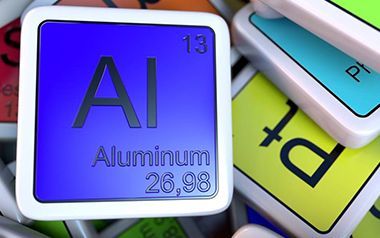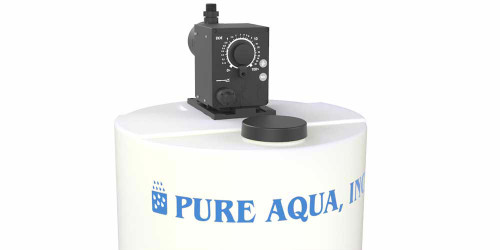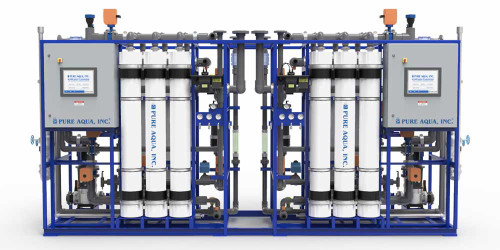Aluminum is a natural resource metal which is found throughout the earth’s crust. In its purest form, it is a shiny, grey-colored, and delicate metal that is commonly extracted from mining. Aluminum arises in drinking water through the disposal of industrial waste and the usage of coagulants such as alum during the water purification process. When found in water with high concentrations, aluminum is considered a highly dangerous toxic agent to all aquatic organisms. Human exposure to aluminum in drinking water increases the possibility of contracting brain-related diseases including, Alzheimer’s, Dementia and Parkinsons. There has also been evidence provided that aluminum can cause serious skeletal issues. Since aluminum has also been proven to a primary cause of the intake of AI into the human body, the removal of aluminum from drinking water is crucial to our well-being.
How to Remove Aluminum from Drinking Water?
Water treatment systems such as water softeners, reverse osmosis, ion exchange and flocculations, are widely used methods for the removal of aluminum from drinking water. Water softener systems are the preferred choice for targeting aluminum in regards to industrial water treatment. Reverse osmosis is considered the most effective option for reducing aluminum from drinking water, with the capacity of removing about 98% of all its content. Water distillation is also highly efficient in the water treatment process, with these systems able to remove more than 99% of aluminum from drinking water.
[custom-specifications]
HOW DO I KNOW IF I HAVE ALUMINUM IN MY WATER?
There is no odor or taste present in aluminum-contaminated water. Nevertheless, high amounts of aluminum can change the color of water to dark blue. Ultimately, the only sure way to ascertain the levels of aluminum in your drinking water is to have it tested by a water monitoring & testing agency.
How Can I be Exposed to Aluminum?
Aluminum is found in various degrees within most fruits, vegetables, meats and fish. Aluminum content is significantly increased with the use of aluminum foils and pots during the cooking process of these items. While consumable water is not a primary source of human exposure to aluminum, substances such as food additives, antiperspirants, and antacids are found to be secondary sources of aluminum exposure.
[/custom-specifications]
[custom-features]
Recommended Systems would be:
- Industrial & Commercial Media Filter MF-600
- Industrial & Commercial Media Filter MF-1000
- Industrial Water Softener SF-100S
- Industrial Water Softener SF-110F
- Commercial Water Softener SF-200F
[/custom-features]
[custom-usage]
Water softener systems provide softer and cleaner clothes by removing the minerals that cause hardness, such as calcium and magnesium. The advantages of these systems include:
- Longer life span of appliances such as dishwasher, washing machine, and water heaters.
- Immense cost-savings with less need for commercial chemical and cleaning products
- Less water spotting
- Reduction of maintenance costs
- Cutback on water and energy consumption
[/custom-usage]
-
You guys are very knowledgeable
Teaches you everything needed to know about aluminum water treatment
- Related Project1:
- https://pureaqua.com/stainless-steel-multi-media-filters-with-auto-backwash-2-x-330-gpm-abu-dhabi/
- Related Project2:
- https://pureaqua.com/industrial-multi-media-filter-350-gpm-mexico/
- Related Project3:
- https://pureaqua.com/automatic-triple-water-softener-for-drinking-400-gpm-usa/
- Related Project4:
- https://pureaqua.com/commercial-twin-alternating-water-softening-system-for-drinking-water-100-gpm-usa/
 ENGLISH arrow_drop_down
ENGLISH arrow_drop_down
 ESPAÑOL
ESPAÑOL ???????
??????? PORTUGUÉS
PORTUGUÉS FRANÇAIS
FRANÇAIS














